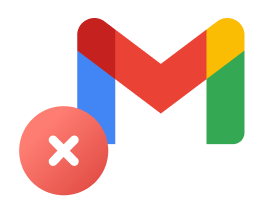You’ve seen other companies send messages from a no-reply email address? And now you want to do the same? Here’s everything you need to know about do-not-reply emails and how to use them.
No-reply email addresses are an endangered species. A few years ago, we used to see them almost everywhere. But now the tables have turned. And while some companies still send the occasional do-not-reply email, the top-performing brands are no longer using this strategy.
Want to know why? In this quick guide, we’ll tell you everything you need to know about no-reply email addresses. Including how to create one. Why they’re probably not the best strategy for your business. And what you might want to do instead of sending do-not-reply emails.
Sounds good? Then let’s dive right in ⤵️
What is a no-reply email address?
A no-reply is an email address that is able to send out emails. But not receive them. Meaning that if you hit the reply button, your email will be ignored.
You’ve likely received messages from this type of email address before. They often follow this format: [email protected].

In the old days of email marketing, a lot of companies used no-reply email addresses to discourage people from responding to certain emails, such as:
- Shipping notifications
- Password reset emails
- Account creation emails
- Purchase confirmation emails
- And email marketing campaigns
Most brands thought that using a no-reply email address was a good way to avoid getting flooded with messages, save time and reduce costs.
Turns out things are a little more complicated. Which is why a lot of companies stopped sending do-not-reply emails. But we’ll get to that.
How to create a no-reply email address?
First, we want to show you how to create your own no-reply email address. In this example, we’ll use the Google Workspace admin console. But you can do it from other email service providers as well.
Step 1: Sign in to the Google Workspace Admin console.
Step 2: Go to Users. And select Add a user.

Step 3: Create a new email address. Choose noreply as the username. Create a password. And click on Add new user.
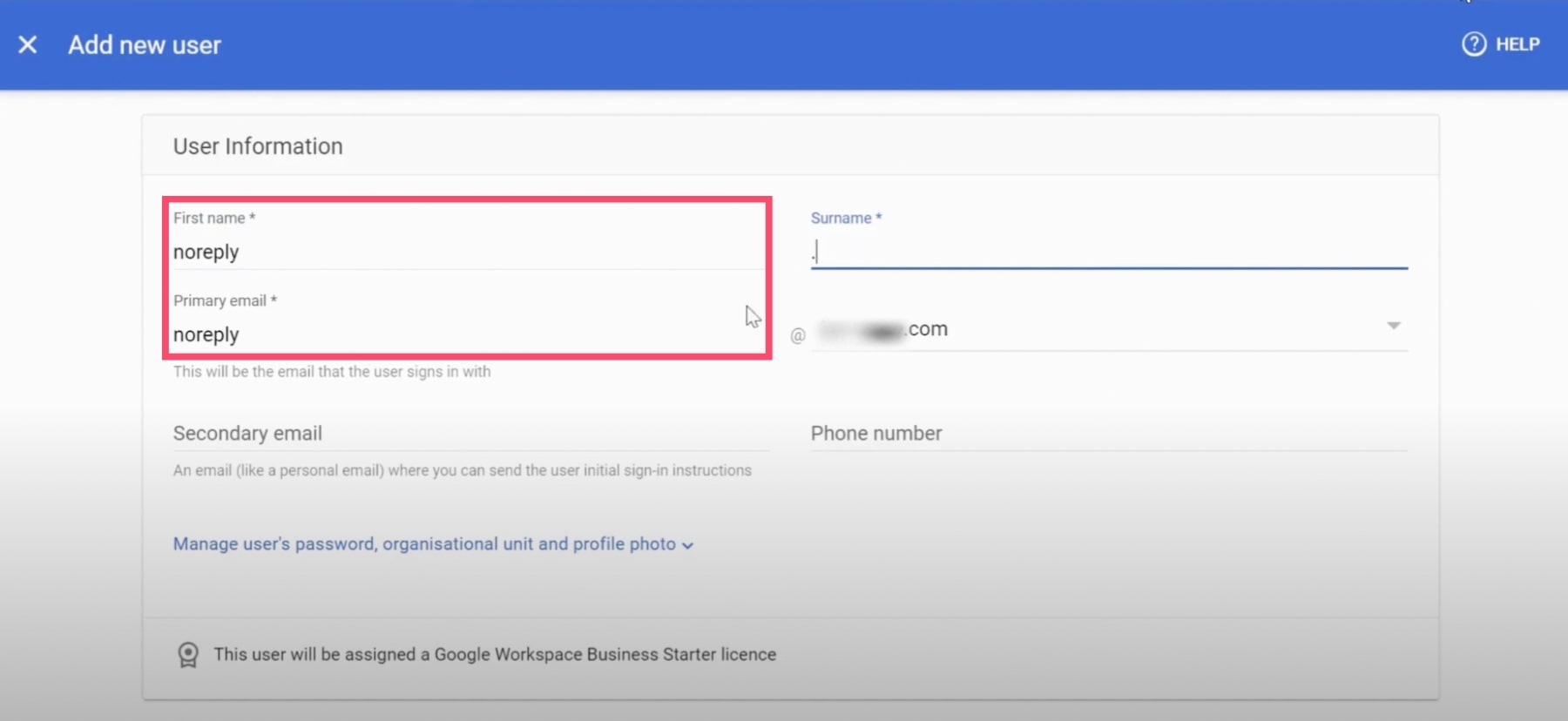
Google will confirm that you’ve created your noreply email address. But your work is not quite done yet.
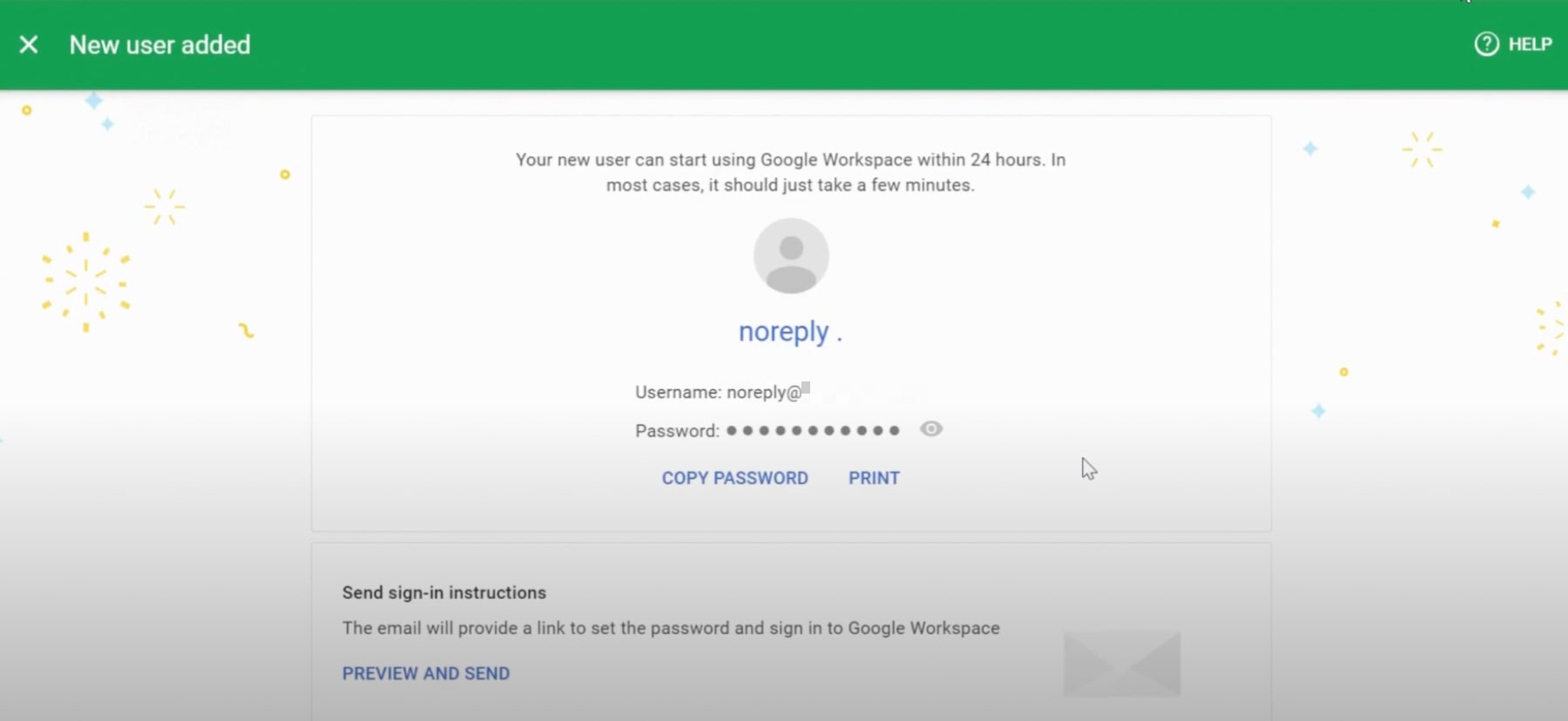
Step 4: Go back to the Google Workspace Admin console. And navigate to Apps > Google Workspace > Gmail > Routing.
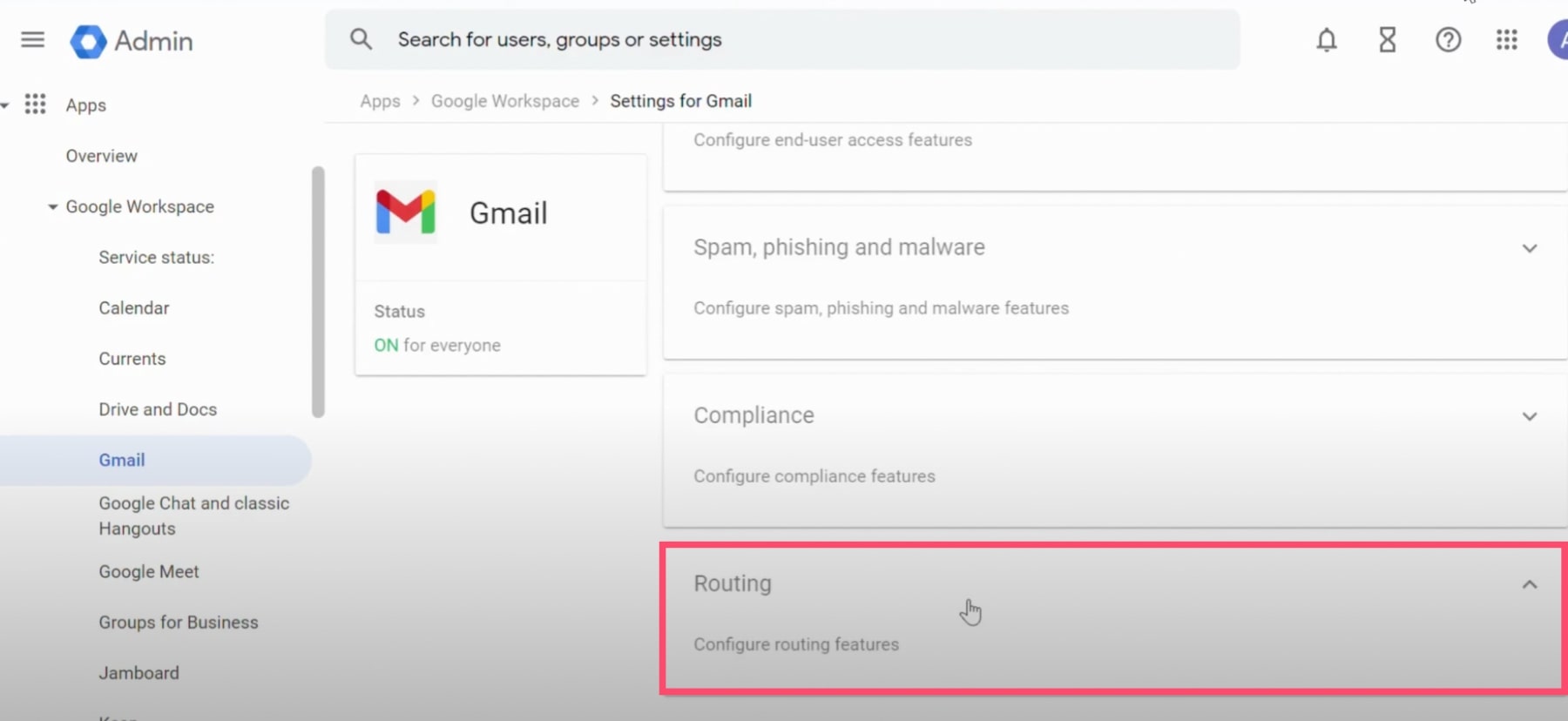
Step 5: From there, click on Configure.

Step 6: Give a name to your new rule (e.g Reject Emails for No-reply). And under Email messages to affect select Inbound and Internal - sending.
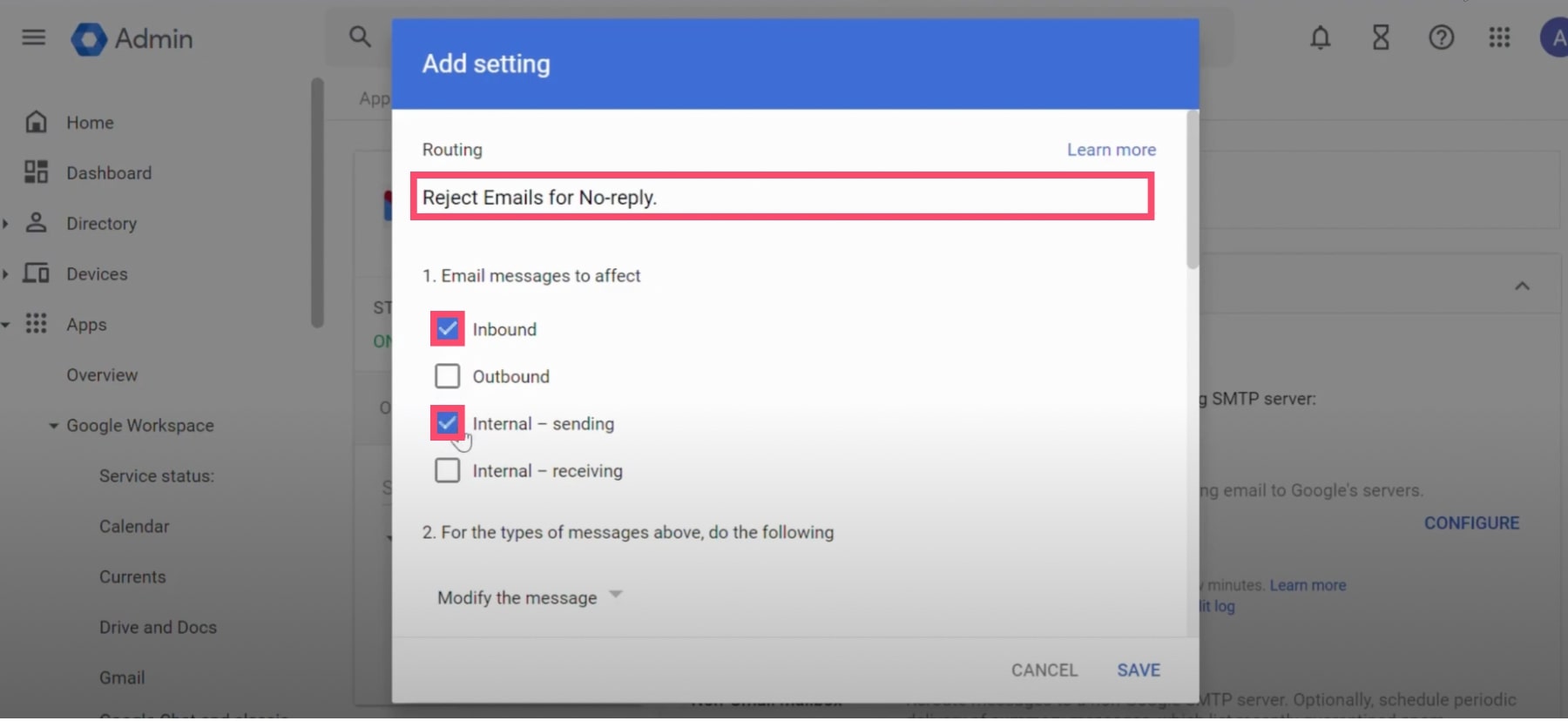
Step 7: Under For the types of messages above, do the following, select Reject the message.
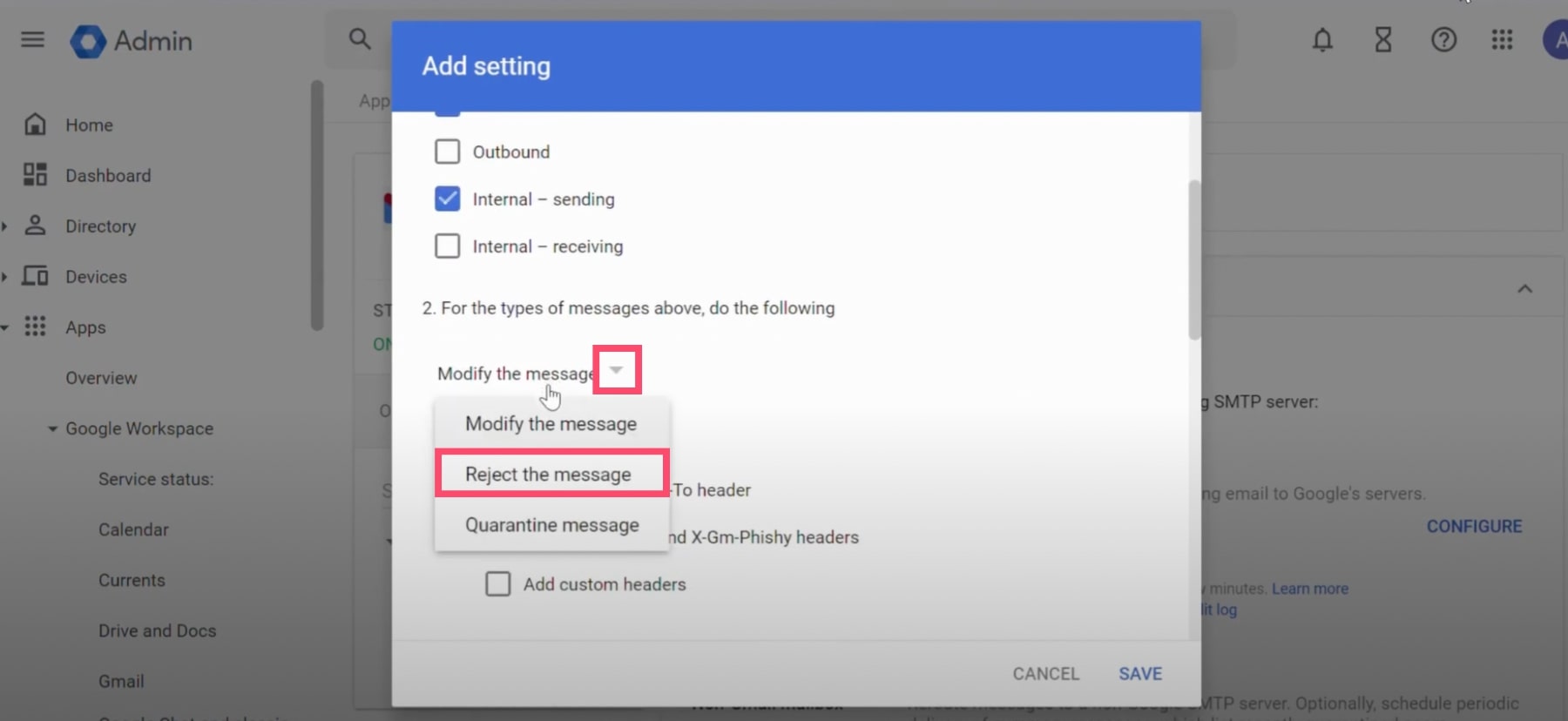
Step 8: You can also add a custom rejection notice. That’s the message your recipients will receive when they try to reach you through your no-reply email address. Make sure to mention how your recipients can reach you.

Step 9: Almost there. Click on Show options. Select Only affect specific envelope recipients. Enter your no-reply email address. And click Save.
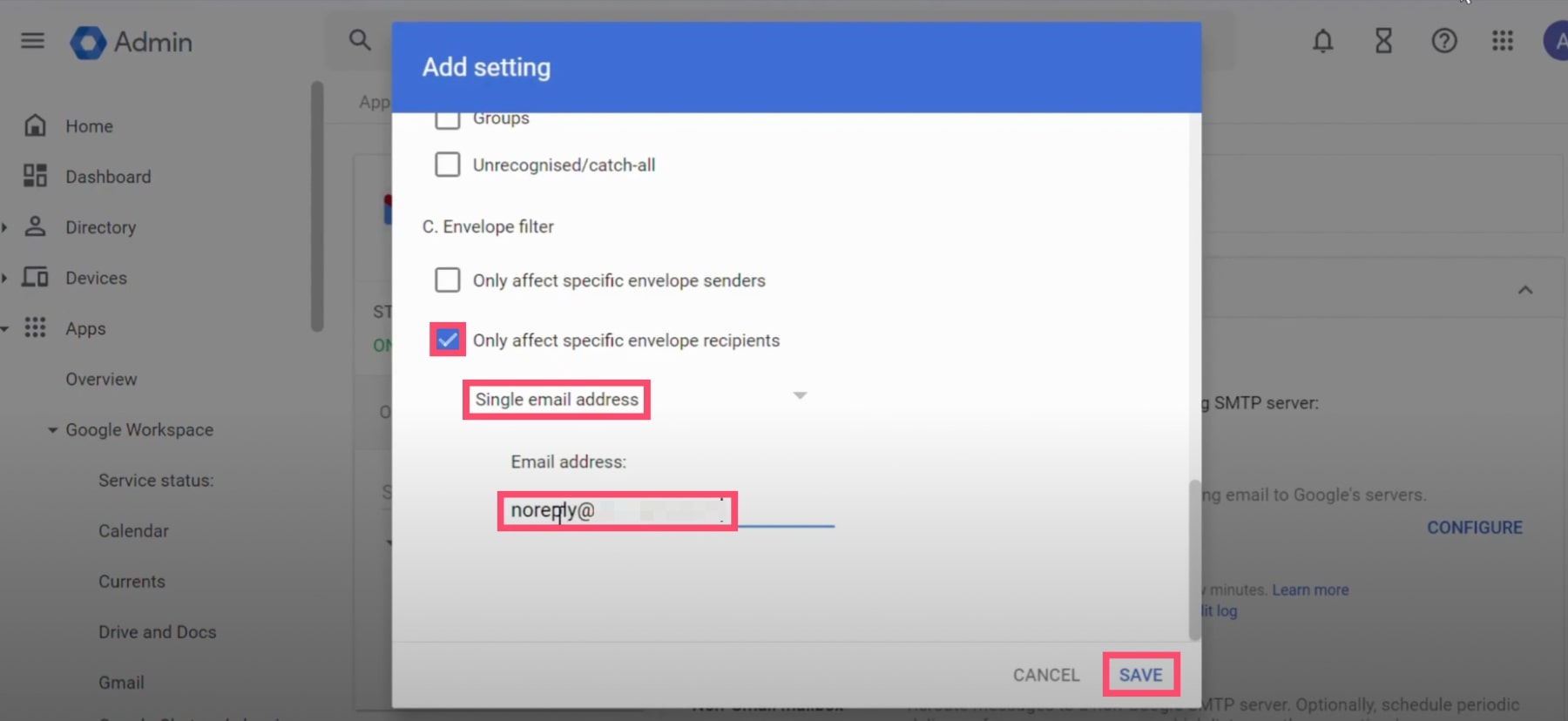
And that’s it. Your no-reply email address is ready. But before you start using it, you should know that do-not-reply emails can harm your business. In more ways than one. Which is why you should use them carefully.
Why no-reply emails may harm your business
Creating a noreply address is tempting. We get that. But it’s probably not the best strategy for your business. Here‘s why you should avoid sending do-not-reply emails to your prospects and customers.
A no-reply email address is more likely to be marked as spam
When people receive a message from a brand they’re no longer interested in, their first reaction is to scroll down and click on the unsubscribe link. Right?
But what if they can’t find that link? In that case, they usually hit the reply button. And ask the brand to remove their address from its list.
The problem is that, if the original email was sent from a no-reply address, their reply will be ignored. And the brand won’t even know it.
So the next time the company sends an email, those people will probably get mad. And flag it as spam. Which is bad news for your deliverability.
People can’t add a no-reply address to their contact list
But there’s more. Most email service providers won’t allow your recipients to add a no-reply email address to their contact list.
Why is that important? Because when someone adds you to their address book, you’re a lot less likely to be sent to their junk folder.
By using a no-reply email address you’re actively preventing your recipients from making sure that your emails will reach them. Which increases your chances of landing in their spam folder.
Do-not-reply emails lead to lower engagement
There’s yet another reason why no-reply email addresses may harm your email marketing efforts. And reduce your deliverability.
When you use a no-reply address, people can’t write back. That’s the whole point, right? So why would it matter?
Mostly because email service providers have set automatic filters to protect their users’ inbox from spam.
Those filters are based on multiple criteria, like the sender’s reputation or the use of spam words, for example.
And one of these criteria is whether or not your recipients are engaging with your emails.
In other words, when your prospects or customers reply to one of your emails, most email service providers see this as a positive signal. And they’re less likely to treat you as spam.
So by preventing your recipients from interacting with your emails, you’re basically shooting yourself in the foot.
No-reply emails can hurt your customer experience
Lastly, when they receive an email, most people don’t pay attention to the address it was sent from. If they have something to say, they just hit reply.
But if you’re using a no-reply email address, they may think you’re ignoring them. Or worse: they might receive a notification telling them that their message was blocked.
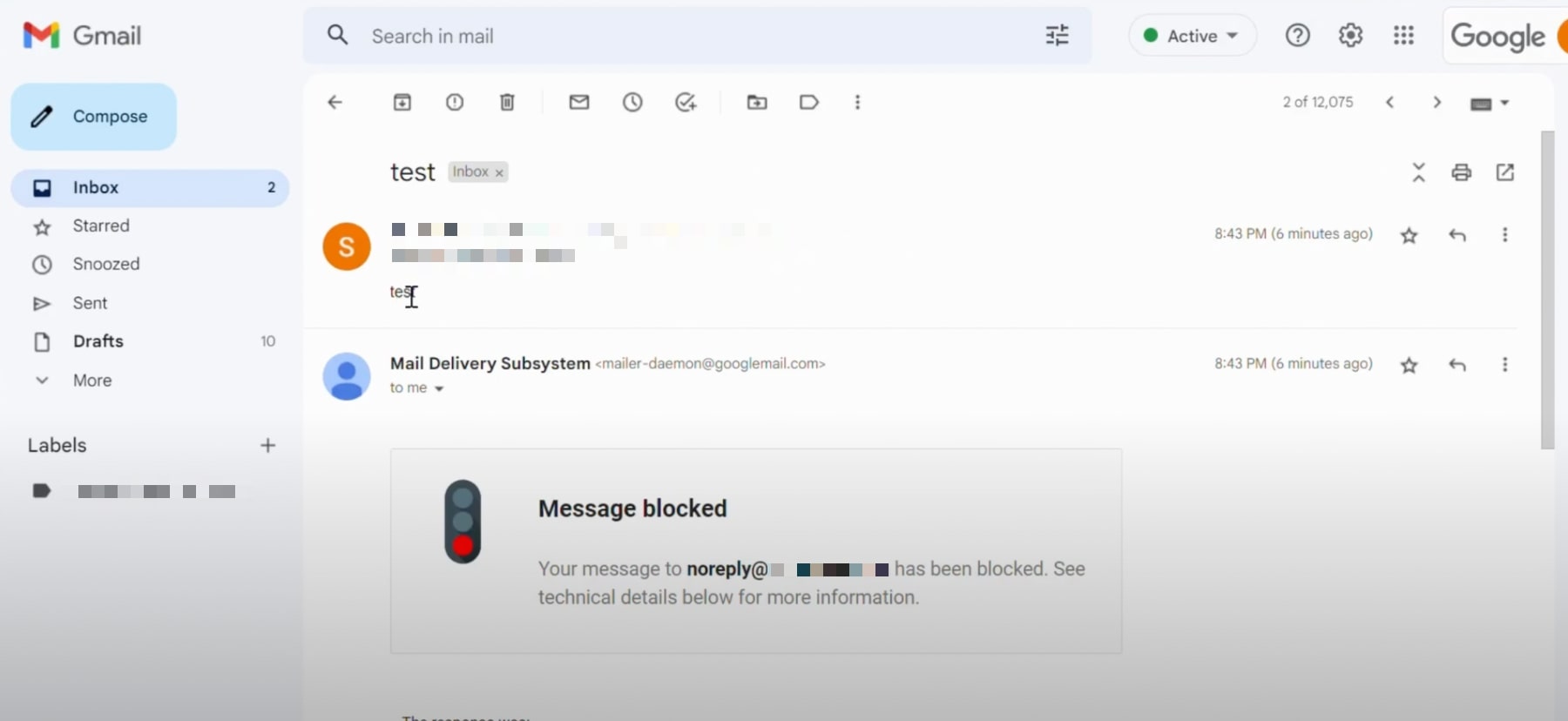
Either way, this will be a very frustrating experience for your customers. And they might resent you for it.
On top of that, you might be missing out on some valuable feedback.
Your prospects and your clients have a lot to say. For example, they may have questions about your product. Or suggestions to help you improve.
Don’t shut them out. Instead, listen to them.
How to replace a no-reply email address
If no-reply addresses are not the way to go, then what? You can replace them with a do-reply email address. And send more engaging emails.
Sure, you’ll end up receiving more replies from your customers. But as we’ve seen before, this is actually a good thing.
And if you’re worried about how to handle this flux of replies, here are a few tactics that you can use to keep your inbox clean and your customers happy.
Create a dedicated reply-to email address
Ditch your no-reply email address and replace it with a dedicated reply-to address. You could go for something like:
This will make it easier to separate customer feedback from other messages. You can take it one step further and create email folders to keep your inbox organized.
Also, make sure that all your relevant team members have access to that email address. And if necessary, invest in a support software tool such as:
- Zendesk
- LiveAgent
- Help Scout
Or one of the many other customer support platforms out there. These tools are not free. But they might help you save some time. And build customer loyalty.
Filter automated responses
When you send a bulk email, you’re bound to receive automated responses and out-of-office messages.
To keep these messages from clogging your inbox, you can set up filters that will automatically delete them.
Use this feature to filter any email that contains keywords such as “automated response” or “out of office”. Here’s how to do it in Gmail.
Step 1: Open Gmail. And click on the “Show search options” icon.
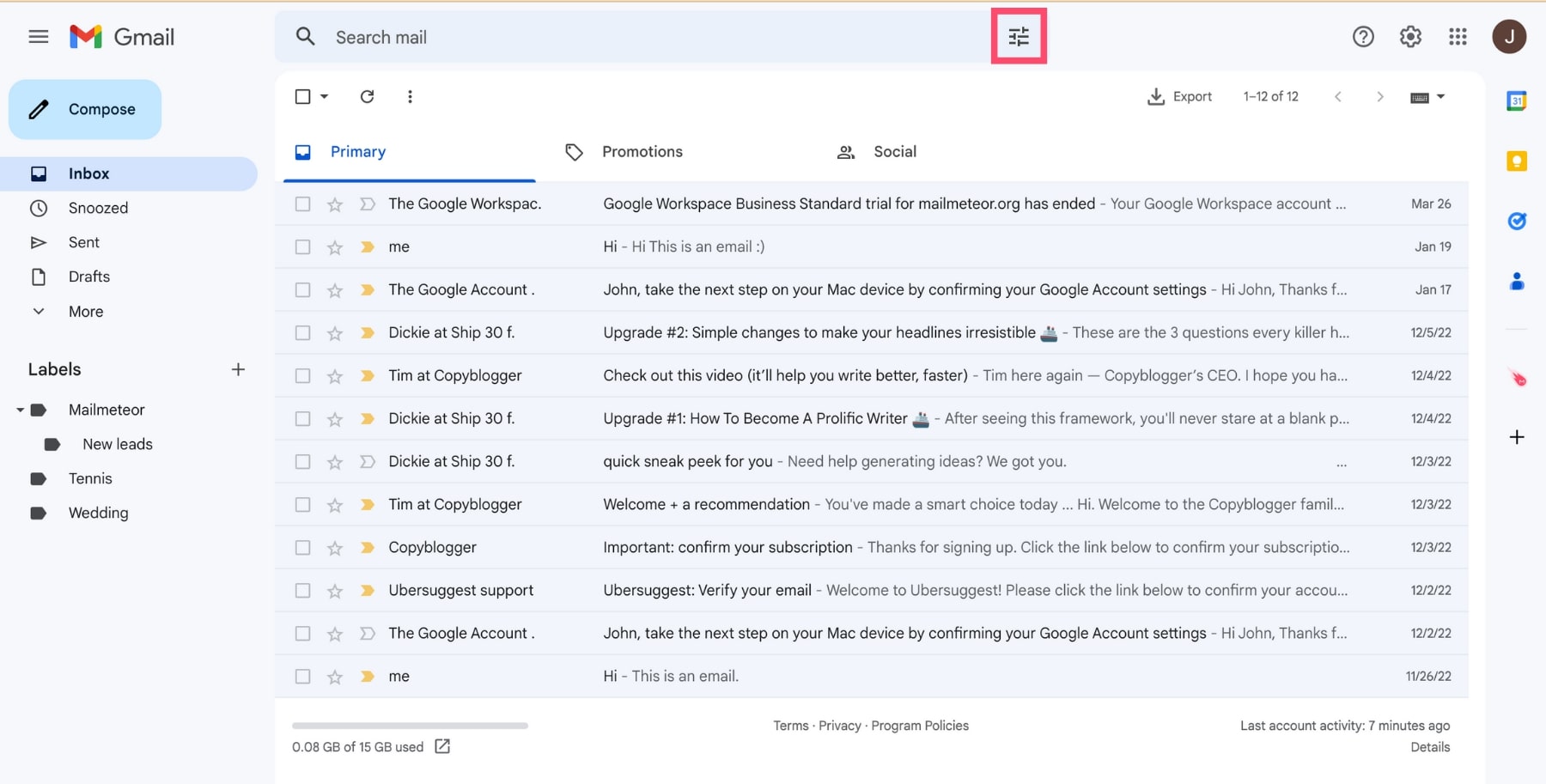
Step 2: Enter the keywords you want to filter. And click on Create filter.

Step 3: Select Delete it. And create your Gmail filter.
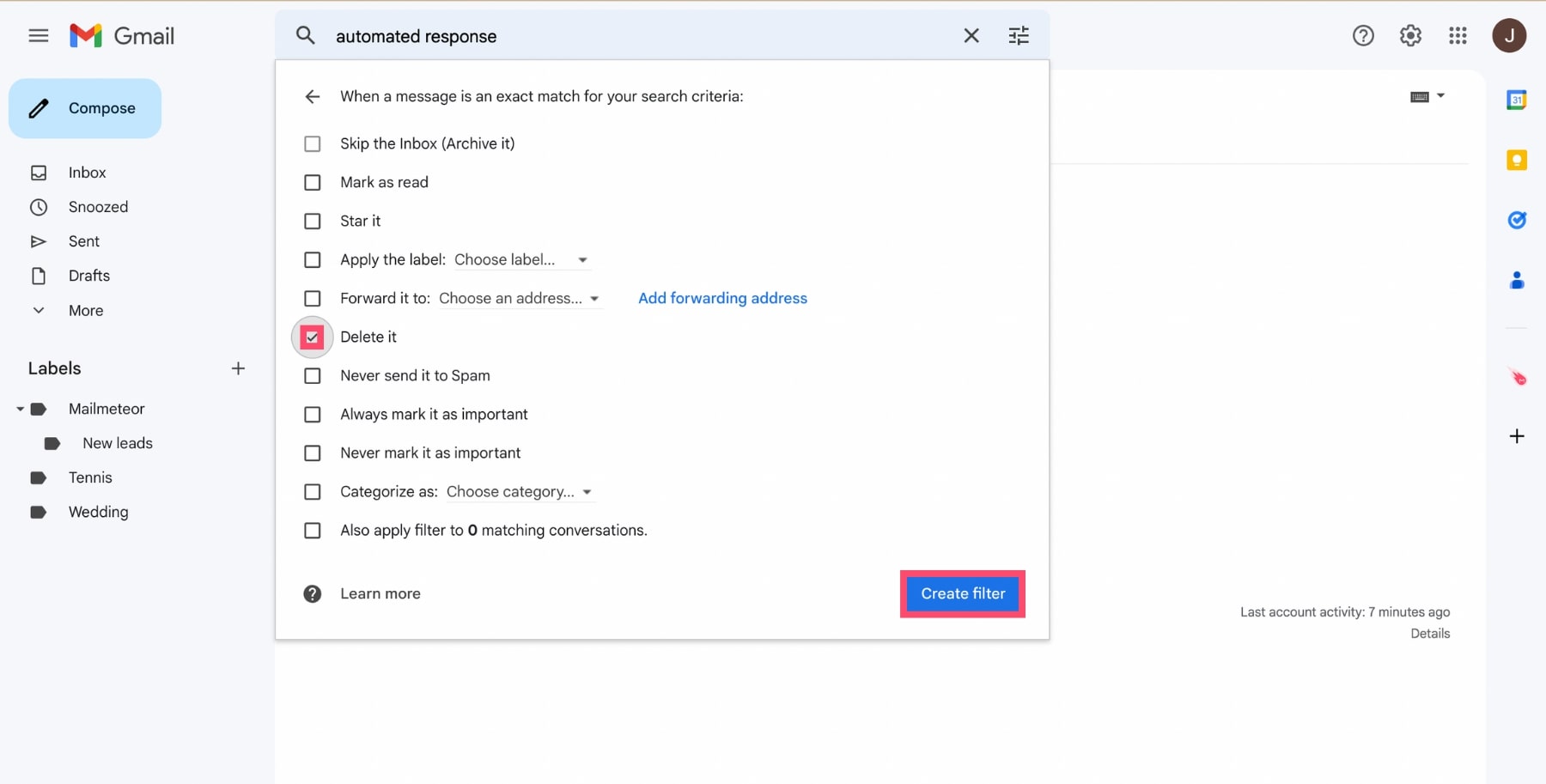
And voilà. This automatic filter will protect your reply-to email address from automated responses. And help you save A LOT of time.
Provide proactive customer support
Want to receive fewer questions in your inbox? The best way to do that is to be more proactive.
You can start by gathering the questions your customers and prospects ask most often.
Then create content to answer those questions. And include links to that content throughout your customer journey. For example, you might:
- Record a video tutorial
- Write a blog post
- Create a FAQ
This will help reduce the number of messages your reply-to address gets. And it will also improve your customer experience. It’s a win for everyone.
